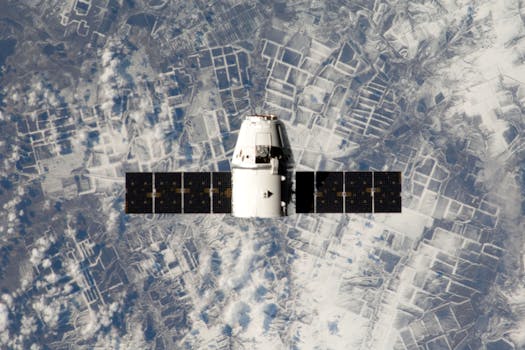
Orbiting Innovations: Key Updates in Satellite Telecommunications Technology
Orbiting Innovations: Key Updates in Satellite Telecommunications Technology is transforming the way we communicate and access information worldwide. With the increasing demand for global connectivity, satellite telecommunications technology has become a vital component of modern communication systems. In this article, we will explore the latest updates and innovations in satellite telecommunications technology, and how they are shaping the future of global communication.
Introduction to Satellite Telecommunications
Satellite telecommunications technology uses artificial satellites orbiting the Earth to transmit and receive signals, enabling communication between different parts of the world. This technology has been around for several decades, but recent advances have significantly improved its capabilities and efficiency. Satellite telecommunications technology is used in a wide range of applications, including mobile communications, internet connectivity, navigation, and remote sensing.
Advances in Satellite Technology
There have been several recent advances in satellite technology that have improved the efficiency and capabilities of satellite telecommunications. One of the most significant advances is the development of high-throughput satellites (HTS), which offer higher data rates and greater connectivity than traditional satellites. HTS satellites use multiple spot beams to provide focused coverage of specific regions, increasing the overall capacity and reducing latency.
Another significant advance is the development of low-Earth orbit (LEO) satellites, which orbit the Earth at an altitude of around 1,200 miles. LEO satellites have several advantages over traditional geostationary satellites, including lower latency, higher data rates, and improved connectivity. Several companies, including SpaceX and OneWeb, are launching constellations of LEO satellites to provide global internet connectivity.
Applications of Satellite Telecommunications Technology
Satellite telecommunications technology has a wide range of applications, including mobile communications, internet connectivity, navigation, and remote sensing. One of the most significant applications is in mobile communications, where satellite technology is used to provide coverage in remote and underserved areas. Satellite-based mobile networks are also used to provide backup connectivity during natural disasters and outages.
Satellite telecommunications technology is also used to provide internet connectivity in remote and underserved areas. Several companies, including HughesNet and Exede Internet, offer satellite-based internet services that provide high-speed connectivity to rural and remote areas. Satellite-based internet services are also used to provide connectivity to aircraft, ships, and other vehicles in motion.
Challenges and Future Directions
Despite the many advances in satellite telecommunications technology, there are still several challenges that need to be addressed. One of the most significant challenges is the issue of latency, which can be a problem for real-time applications such as video conferencing and online gaming. Another challenge is the issue of interference, which can be caused by other satellites and terrestrial systems.
To address these challenges, researchers and developers are working on new technologies and innovations, such as advanced modulation techniques and beamforming. There are also efforts to develop new satellite constellations and architectures, such as the use of cube satellites and satellite swarms. These advancements are expected to further improve the efficiency and capabilities of satellite telecommunications technology, and enable new applications and services.




